Cover
Title Page
Copyright Page
Dedication
Table of Contents
Preface
Chapter 1 Receiving Systems and Receiving System Architectures
1.1 Introduction
1.2 Electronic Support Systems
1.2.1 Electronic Support
1.2.2 Command and Control
1.3 The Electromagnetic Spectrum
1.4 Receiving System Architectures
1.4.1 Fundamental Receiving System Model
1.5 Monitor Receivers
1.5.1 Concept of the Superhet Receiver
1.6 Search Receiver Architectures
1.6.1 Scanning Narrowband Receiver
1.6.2 Compressive Receiver
1.6.3 Digital Transform Receiver
1.6.4 Receiver Considerations
1.7 Key System Performance Parameters
1.7.1 Noise Figure
1.7.2 Sensitivity
1.7.3 Selectivity
1.7.4 Dynamic Range
1.7.5 Other Significant Parameters
1.8 Spread Spectrum
1.8.1 FHSS
1.8.2 DSSS
1.8.3 THSS
1.9 Collection Management
1.9.1 The Collection Management Process
1.10 Concluding Remarks
Appendix 1.A Collection Management Process Output Products
1.A.1 Asset Evaluation Worksheet
1.A.2 Intelligence Synchronization Matrix
References
Chapter 2 Signals and Modulation Systems
2.1 Introduction
2.2 Representing Signals
2.3 Complex Signals and Systems
2.3.1 Introduction
2.3.2 Basic Concepts and Definitions
2.3.3 Analytic Signals and Hilbert Transforms
2.3.4 Frequency Translations and Mixing
2.3.5 Complex Signals and Sampling
2.3.6 Summary
2.4 System Definition
2.5 Modulations
2.5.1 Analog Modulations
2.5.2 Modern Digital Modulations
2.6 Random Modulation
2.6.1 Stationary Processes
2.6.2 Random Modulation
2.6.3 Summary
2.7 Access Methods
2.7.1 TDMA
2.7.2 FDMA
2.7.3 CDMA
2.7.4 SDMA
2.8 Pulse-Shaping Filters
2.8.1 Rectangular Pulse
2.8.2 Shaped Pulses
2.9 Concluding Remarks
References
Chapter 3 RF Stage
3.1 Introduction
3.2 Normalized Input Referred Added Noise
3.3 Noise Factor/Figure
3.4 Low Noise Amplifiers
3.4.1 Introduction
3.4.2 Minimum Noise Factor
3.4.3 LNA Gain
3.4.4 BJT LNA
3.4.5 MOSFET LNA
3.4.6 Input Matching
3.4.7 LNA Stability
3.4.8 LNA Nonlinearity Model
3.5 Noise Reduction with an Input Transformer
3.6 Band Select Filtering/Preselector Filters
3.6.1 Roofing Filters
3.7 Concluding Remarks
References
Chapter 4 Bandwidth Expansion for Small Signal Amplifiers
4.1 Introduction
4.2 Shunt Peaking
4.3 Input and Output Matching
4.3.1 Bandwidth Enhancement for Transimpedance Amplifiers
4.3.2 Limits to Bandwidth Enhancement
4.4 Lossy Matching
4.4.1 Performance Parameters
4.4.2 Practical Considerations
4.4.3 Summary
4.5 Feedback
4.5.1 Shunt-Series Feedback
4.5.2 Shunt Feedback
4.5.3 Bandwidth Extension
4.6 Balanced Amplifiers
4.6.1 Coupling
4.7 Distributed Amplifier
4.8 Concluding Remarks
References
Chapter 5 RF Mixers and Mixing
5.1 Introduction
5.2 RF Mixers
5.2.1 Introduction
5.2.2 Nonlinear Mixers
5.2.3 Analog Mixing
5.2.4 Large Signal Mixer Performance
5.2.5 Switching or Sampling Mixers
5.2.6 Some Passive Mixers
5.2.7 Some Active Mixers
5.2.8 Isolation
5.2.9 Conversion Gain
5.2.10 Mixer Noise
5.2.11 Image Reject Filtering
5.2.12 Summary
5.3 Local Oscillators
5.3.1 Characteristics of Feedback
5.3.2 Fundamental Oscillator Types
5.3.3 Crystal Oscillators
5.3.4 Microelectromechanical Oscillators
5.3.5 Phase Locked Loops
5.3.6 Frequency Synthesizers
5.3.7 Oscillator Phase Noise
5.3.8 Oscillator Stability
5.4 Concluding Remarks
References
Chapter 6 IF Amplifiers
6.1 Introduction
6.2 Amplifier Input and Output Impedances and Gain
6.3 RF Amplifiers
6.3.1 EW RF Amplifier Analysis
6.3.2 BJT IF Amplifiers
6.3.3 MOSFET High Frequency Amplifiers
6.3.4 Frequency Response of RF Amplifiers
6.3.5 Microwave Tubes
6.4 Transformer Coupling
6.5 Automatic Gain Control
6.5.1 Introduction
6.5.2 VGA Types
6.5.3 Loop Dynamics
6.5.4 Detector Types
6.5.5 Operating Level of Detector
6.6 Concluding Remarks
References
Chapter 7 IF Filters
7.1 Introduction
7.2 Filters and Signals
7.3 Basic Filter Types
7.3.1 Transfer Functions
7.3.2 Brick-Wall Filter
7.3.3 Bandpass
7.3.4 Notch or Bandstop
7.3.5 Lowpass
7.3.6 Highpass
7.3.7 All-Pass or Phase-Shift
7.3.8 Higher-Order Filters
7.4 Filter Approximations
7.4.1 Introduction
7.4.2 Butterworth
7.4.3 Chebyshev
7.4.4 Bessel
7.4.5 Elliptic �⠀䌀愀甀攀爀)
7.5 Approaches to Implementing Filters
7.5.1 Passive Filters
7.5.2 Surface Acoustic Wave Filters
7.5.3 Crystal Filters
7.5.4 Ceramic RF and IF Filters
7.5.5 MEMS RF Filters
7.6 Concluding Remarks
References
Chapter 8 Narrowband Receivers
8.1 Introduction
8.2 Superheterodyne Receivers
8.2.1 Superheterodyne Receiver History
8.2.2 Mixing and the Superhet Receiver
8.2.3 Images in the Superhet Receiver
8.2.4 IF Frequencies
8.2.5 Superhet Receiver Block Diagram
8.3 Homodyne �⠀娀攀爀漀ⴀ䤀䘀) Receiver
8.3.1 Concept of the DCR
8.3.2 Overview of DC Offsets in DCRs
8.3.3 Noise in Direct Conversion Receivers
8.4 Tuned Radio Frequency Receivers
8.5 Concluding Remarks
References
Chapter 9 Compressive Receivers
9.1 Introduction
9.2 Compressive Receiver Configurations
9.2.1 C-M-C and M-C-M Configurations
9.3 Fundamentals of CxRx Operation
9.3.1 The M�⠀猀)-C�⠀氀)-M Arrangement
9.4 Dispersive Delay Lines
9.4.1 Limitations of Practical SAW Devices
9.5 M-C CxRx Operation
9.5.1 Swept Local Oscillator
9.5.2 Frequency Resolution
9.5.3 Frequency Accuracy
9.5.4 Sensitivity and Compression Time
9.5.5 Simultaneous Signal Detection
9.5.6 CxRx Response
9.6 The C-M-C Chirp Transform Arrangement
9.7 Concluding Remarks
References
Chapter 10 Digital Receivers Overview
10.1 Introduction
10.2 Digital Receiver Architectures
10.2.1 Narrowband Digital Receiver
10.2.2 Digital RF Architecture
10.2.3 IF Sampling Topology
10.2.4 Electronic Warfare Digital Receiver
10.3 Digital Receiver Technology Drivers
10.3.1 Analog-to-Digital Converter
10.3.2 Digital Signal Processor
10.4 Elementary Introduction to RF/IF Digital Signal Processing
10.4.1 Frequency-Domain Ambiguity
10.4.2 Quadrature Signals
10.4.3 Summary
10.5 Digital EW Receivers
10.5.1 Introduction
10.5.2 Single-Signal versus Multisignal
10.5.3 Benefits of Implementing a Digital Receiver
10.5.4 Receiver Performance Expectations
10.5.5 Available Noise Power
10.5.6 Cascaded Noise Figure
10.5.7 Noise Figures and ADCs
10.5.8 Conversion Gain and Sensitivity
10.5.9 ADC Spurious Signals and Dither
10.5.10 Third-Order Intercept Point
10.5.11 ADC Clock Jitter
10.5.12 Phase Noise
10.5.13 Summary
10.6 Gain and Phase Imbalance
10.7 Concluding Remarks
References
Chapter 11 Sampling and Analog-to-Digital Converters
11.1 Introduction
11.2 Wideband Receivers
11.2.1 Channelized
11.3 Sampling Methods and Analog Filtering
11.3.1 Nyquist Sampling
11.3.2 Bandpass Sampling
11.4 Effects of Quantization Noise, Distortion, and Receiver Noise
11.4.1 Introduction
11.4.2 ADC Transfer Function
11.4.3 Input-Referred Noise
11.4.4 Theoretical Signal-to-Noise Ratio
11.4.5 Practical Specifications for Real ADCs
11.4.6 ADC Noises
11.4.7 Spurious-Free Dynamic Range
11.4.8 Noise Power Ratio
11.5 Flash ADC
11.5.1 Flash ADC Architecture
11.5.2 Sparkle Codes
11.5.3 Metastability
11.5.4 Input Signal Frequency Dependence
11.6 Sigma-Delta ADCs
11.6.1 Introduction
11.6.2 Σ-Δ ADC Operation
11.6.3 Higher Order Loop Considerations
11.6.4 Multibit Sigma-Delta Converters
11.6.5 Bandpass Sigma-Delta Converters
11.7 Flash ADC versus Other ADC Architectures
11.7.1 Flash versus SAR ADCs
11.7.2 Flash versus Pipelined ADCs
11.7.3 Flash versus Integrating ADCs
11.7.4 Flash versus Sigma-Delta ADCs
11.7.5 Flash ADC Architectural Tradeoffs
11.7.6 Flash Converter Characteristics
11.7.7 Summary
11.8 Other Sampling and ADC Considerations
11.8.1 Ease of ADC Implementation
11.8.2 Linearity
11.8.3 Power Consumption, Circuit Complexity, Chip Area, and Reconfigurability
11.9 Concluding Remarks
References
Chapter 12 Digital Filtering
12.1 Introduction
12.1.1 Advantages of Using Digital Filters
12.1.2 Disadvantages of Digital Filters
12.2 Operation of Digital Filters
12.3 Simple Digital Filters
12.3.1 Order of a Digital Filter
12.3.2 Digital Filter Coefficients
12.4 Recursive and Nonrecursive Filters
12.4.1 Impulse Response
12.4.2 Lowpass FIR Filter
12.4.3 Order of an IIR Filter
12.4.4 Example of a Recursive Filter
12.4.5 Coefficients of IIR Digital Filters
12.5 The Transfer Function of a Digital Filter
12.5.1 The Frequency Response of Digital Filters
12.6 Multirate Processing of Bandpass and I/Q Signals
12.6.1 Decimation or Downsampling with Complex Signals
12.6.2 Interpolation or Upsampling with Complex Signals
12.6.3 Efficient Polyphase Structures
12.7 Hilbert Transform and Delay
12.7.1 Filtering Effect of the Delay Processing
12.8 Concluding Remarks
References
Chapter 13 Digital Demodulation
13.1 Introduction
13.2 Digital I/Q Demodulation
13.2.1 Introduction
13.2.2 I/Q Demodulation
13.3 Direct IF Digital Demodulator
13.3.1 Digital Signal Processing without the Digital Signal Processor
13.3.2 I/Q Sampling
13.3.3 Vector Representation
13.3.4 Undersampling
13.4 Direct IF-Processing Elements
13.4.1 A/D Converter/IF Sampler
13.4.2 Digital IF Sample to I/Q Vector Conversion
13.4.3 I/Q Vector to Phase Conversion
13.4.4 Vector Magnitude: AM Detection
13.4.5 Summary
13.5 I/Q Imbalance Compensation
13.5.1 Baseband Signal Model for Digital Imbalance Compensation
13.5.2 Adaptive Interference Cancellation �⠀䤀䌀)-Based Compensation
13.5.3 Summary
13.5.4 Verification and Validation
13.6 Concluding Remarks
References
Chapter 14 Digital-to-Analog Converters
14.1 Introduction
14.2 Digital-to-Analog Converter Architectures
14.2.1 DAC Transfer Function
14.2.2 String DAC
14.2.3 Fully Decoded DACs
14.2.4 Time Reference Divider
14.2.5 Oversampling DACs
14.2.6 Sigma-Delta DACs
14.2.7 Current-to-Voltage Converters
14.3 Error Sources in DACs
14.3.1 Static Error Sources
14.3.2 Dynamic Error Sources
14.4 Reconstruction Filters
14.5 Concluding Remarks
Appendix 14.A Semiconductor Current Sources and Switches
14.A.1 Semiconductor Current Sources
14.A.2 Semiconductor Switches
14.A.3 Transistors as Current Source and Switch
References
Chapter 15 Direct Digital Converters
15.1 Introduction
15.2 Digital Receivers
15.3 Digital Downconverters
15.3.1 Introduction
15.3.2 Digital Downconverters
15.4 Polyphase Filter Banks
15.4.1 Introduction
15.4.2 Polyphase Bandwidth, Spectral Spacing, and Output Sample Rates
15.4.3 Computational Complexity
15.5 Concluding Remarks
Appendix 15 A Direct Digital Synthesis
15.A.1 Phase Truncation
15.A.2 Direct Digital Synthesis
References
Chapter 16 Spread Spectrum Techniques
16.1 Introduction
16.2 Review of Direct Sequence Spread Spectrum
16.2.1 Fundamentals of DSSS Operation
16.2.2 Modulation and Demodulation
16.2.3 Coding Techniques
16.2.4 Near-Far Problem
16.3 Review of Frequency Hopping Spread Spectrum
16.3.1 FHSS Operation
16.3.2 Modulation
16.3.3 Coding
16.3.4 FHSS Issues
16.3.5 Near-Far Problem
16.4 Time Hopped Spread Spectrum
16.4.1 Introduction
16.4.2 Ultrawideband Systems
16.4.3 Modulation Formats
16.4.4 UWB Pulse Position Modulation
16.4.5 Jam Resistance and Processing Gain
16.4.6 Multipath and Propagation
16.5 Advantages of Spread Spectrum
16.6 Concluding Remarks
References
Chapter 17 Receivers for Direct Sequence Spread Spectrum Intercept
17.1 Introduction
17.2 Overview of Two Receivers
17.2.1 Eigenanalysis Technique
17.2.2 Spectral Norm Maximization
17.3 Eigenanalysis Direct Sequence Spread Spectrum Receiver
17.3.1 Signal Model
17.3.2 Estimation of the Symbol Duration
17.3.3 Blind Estimation of the Spreading Sequence
17.3.4 Verification and Validation
17.3.5 Summary
17.4 Spectral Norm Direct Sequence Spread Spectrum Receiver
17.4.1 Symbol Synchronization
17.4.2 Symbol Estimation
17.4.3 Spread Sequence Estimation
17.4.4 Identification of Generator Polynomial
17.4.5 Verification and Validation
17.4.6 Summary
17.5 Concluding Remarks
References
Chapter 18 Receivers for Frequency Hopped Spread Spectrum Intercept
18.1 Introduction
18.1.1 Signal Detection
18.2 Optimal Receivers for Frequency Hopped Spread Spectrum Interception
18.3 Detection of Frequency Hopped Spread Spectrum Signals with Filter Bank Combiners
18.3.1 Introduction
18.3.2 Receiver Structure
18.3.3 Radiometer Output Distribution
18.3.4 Channelization Techniques
18.3.5 Logical OR-SUM Channelized Radiometer
18.3.6 MAX-SUM Channelized Radiometer
18.3.7 Verification and Validation
18.3.8 Summary
18.3.9 Partial-Band Detection
18.4 Scanning Superhet for Frequency Hopped Spread Spectrum Target Detection
18.4.1 Scanning Narrowband Receiver
18.4.2 Performance of Scanning Superhet Receivers
18.4.3 Sequential versus Nonsequential Scanning
18.5 Compressive Receivers for Frequency Hopped Spread Spectrum Interception
18.5.1 Compressive Receiver
18.5.2 Noise and Signal
18.5.3 Low SNR Detector
18.5.4 Simple Filter Detectors
18.5.5 Verification and Validation
18.5.6 Summary
18.6 Concluding Remarks
References
Chapter 19 Receivers for Time Hopped Spread Spectrum Intercept
19.1 Introduction
19.2 Detecting UWB Signals
19.2.1 Modulations
19.2.2 Required SNR Measure of Effectiveness
19.2.3 Ratio of Distance-Measure of Effectiveness
19.3 Concluding Remarks
References
Chapter 20 Direction Finding Receivers
20.1 Introduction
20.2 Direction of Arrival
20.3 Direction Finding Techniques Overview
20.3.1 The Adcock Array and the Watson-Watt System
20.3.2 PseudoDoppler Direction Finding System Overview
20.3.3 Phase Interferometer System Overview
20.4 Error Sources in Direction Finding Systems
20.4.1 Polarization-Induced Error
20.4.2 DF Errors Caused by Incoherent Wave Interference
20.4.3 DF Errors Caused by Coherent Wave Interference �⠀䴀甀氀琀椀瀀愀琀栀)
20.4.4 Modulation
20.4.5 Physical Antenna Arrangement
20.4.6 Receiver Noise
20.4.7 Amplitude Matching and Phase Tracking
20.4.8 Antenna Element Interaction
20.4.9 Antenna Height above Ground
20.5 Adcock/Watson-Watt �⠀䘀漀甀爀ⴀ䔀氀攀洀攀渀琀 䄀搀挀漀挀欀)
20.5.1 Natural Direction Finding Error of the Adcock
20.5.2 Adcock Direction Finding Errors Caused by Reflections �⠀䌀漀栀攀爀攀渀琀 圀愀瘀攀 䤀渀琀攀爀昀攀爀攀渀挀攀)
20.5.3 Adcock Incoherent Interference
20.5.4 Adcock Polarization Error
20.5.5 Adcock/Watson-Watt Errors Due to Receiver Noise
20.5.6 Amplitude Matching with Adcock Direction Finding
20.5.7 Phase Errors with the Adcock Direction Finding
20.5.8 Adcock/Watson-Watt Modulation-Induced Errors
20.5.9 Interaction of the Adcock Antenna Elements
20.5.10 Geometrical Errors of the Adcock Antenna
20.6 PseudoDoppler Systems
20.6.1 Output Harmonics
20.6.2 Other Receiver Implications
20.6.3 Polarization-Induced Errors
20.6.4 Doppler Coherent Wave Interference
20.6.5 Doppler Incoherent Interference
20.6.6 Doppler Errors due to Receiver Noise
20.6.7 Tracking and Matching for Doppler Direction Finding
20.6.8 Direction Finding Errors Caused by the Group Delay of the Doppler Direction Finding Receiver
20.6.9 Doppler Direction Finding Errors Caused by Modulation
20.6.10 Interaction of the Doppler Antenna Elements
20.6.11 Geometrical Errors of the Doppler Antenna
20.7 Phase Interferometers
20.7.1 Four-Element Interferometer
20.7.2 Modulation-Induced Errors
20.7.3 Tracking Imbalance-Induced Errors
20.7.4 Polarization Induced-Errors
20.7.5 Antenna Interaction-Induced Errors
20.7.6 Geometrical Misplacement-Induced Errors
20.7.7 Coherent Interference
20.7.8 Incoherent Interference
20.8 Dual Channel Compressive Receivers for Direction Finding
20.8.1 Phase Processor
20.8.2 Phase Measurements
20.8.3 Butler Matrix
20.8.4 Receiver Implications
20.9 Concluding Remarks
Appendix 20.A RMS and RSS in Error Analysis
References
List of Acronyms
About the Author
Index
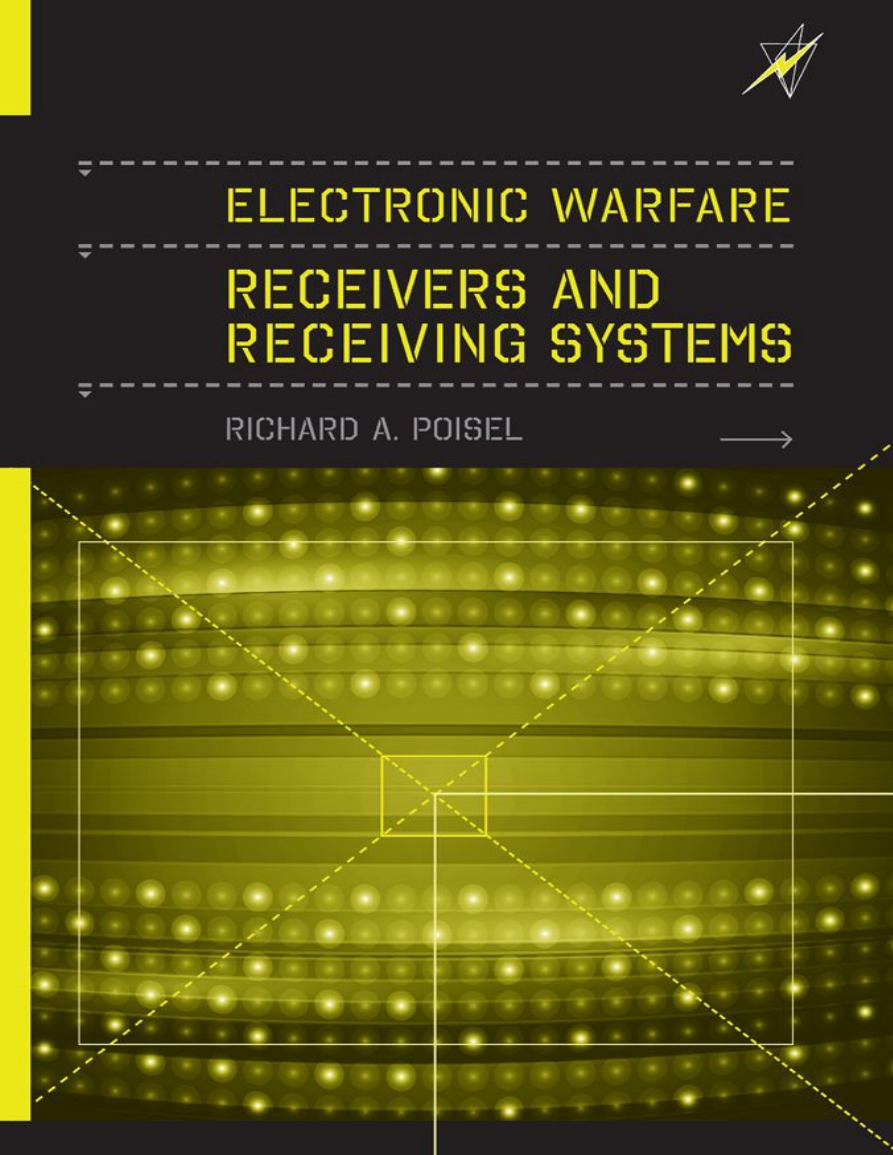

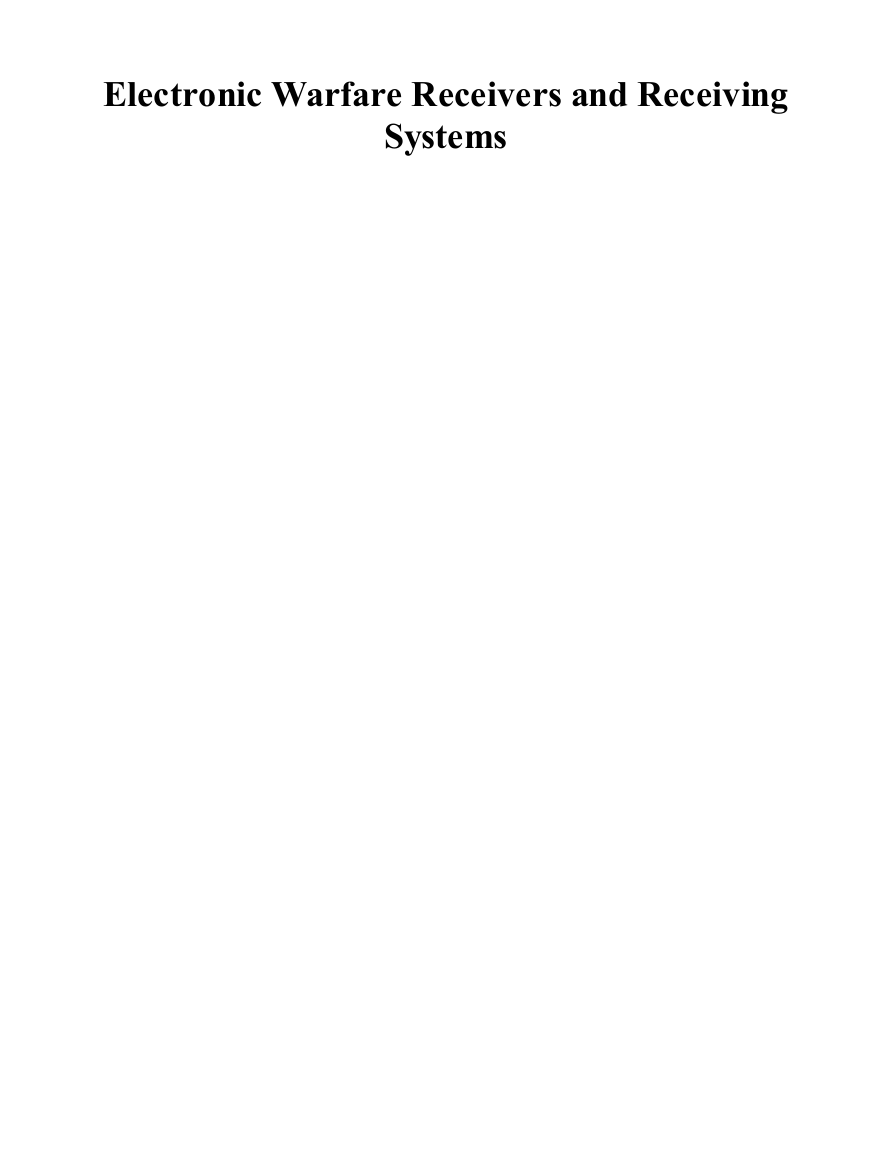
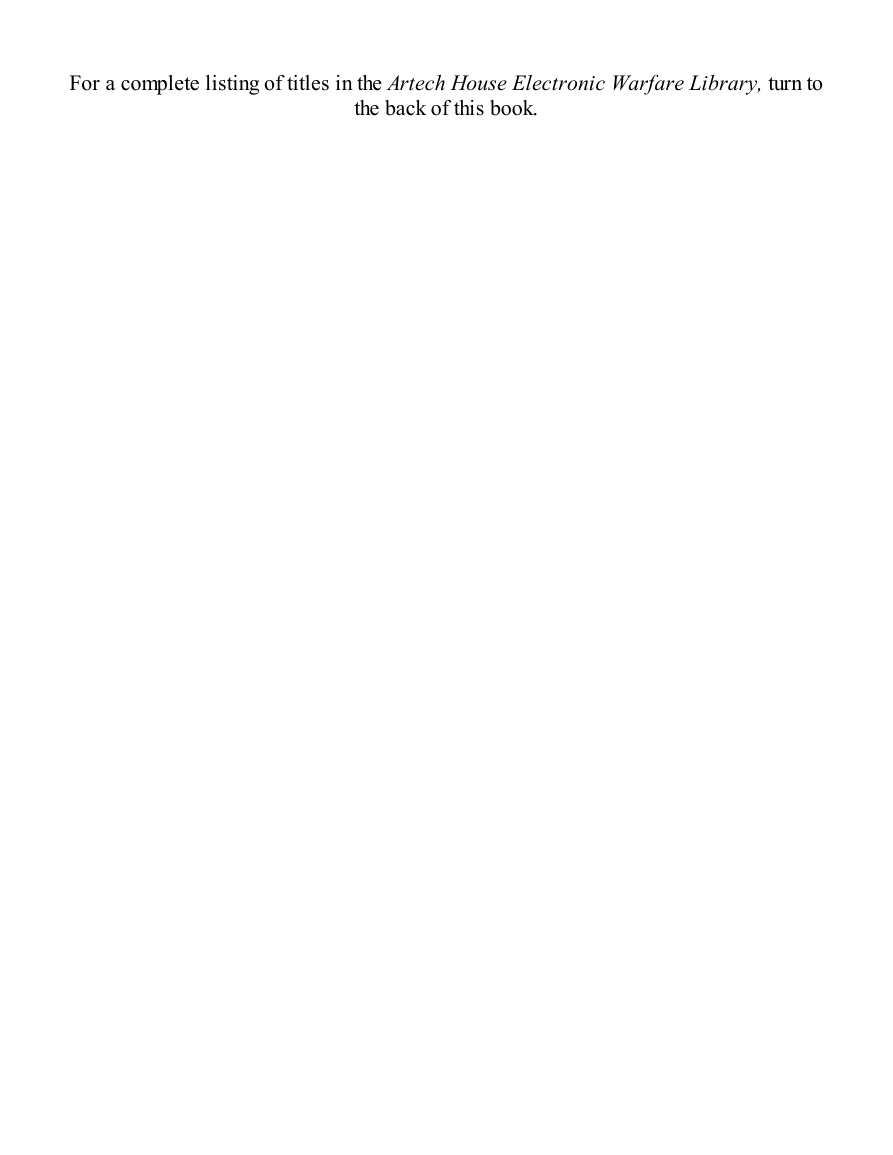

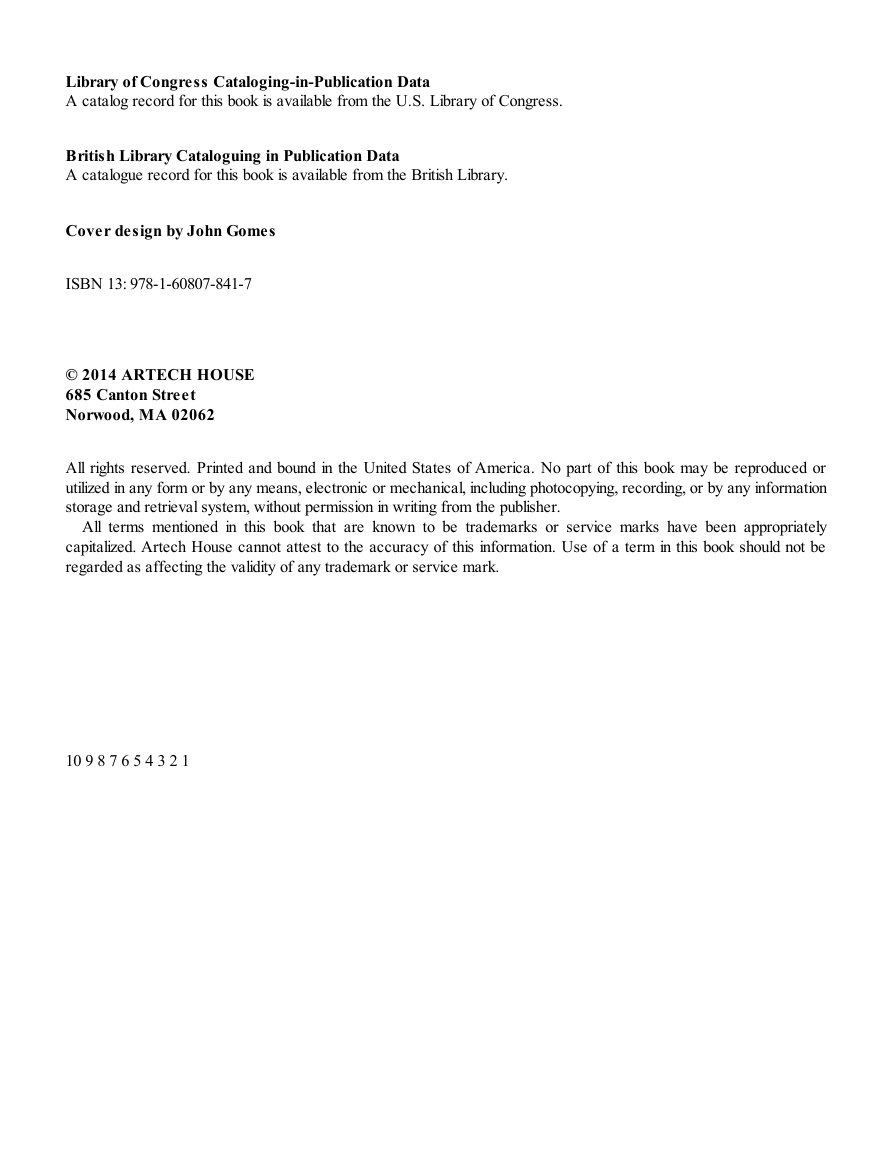

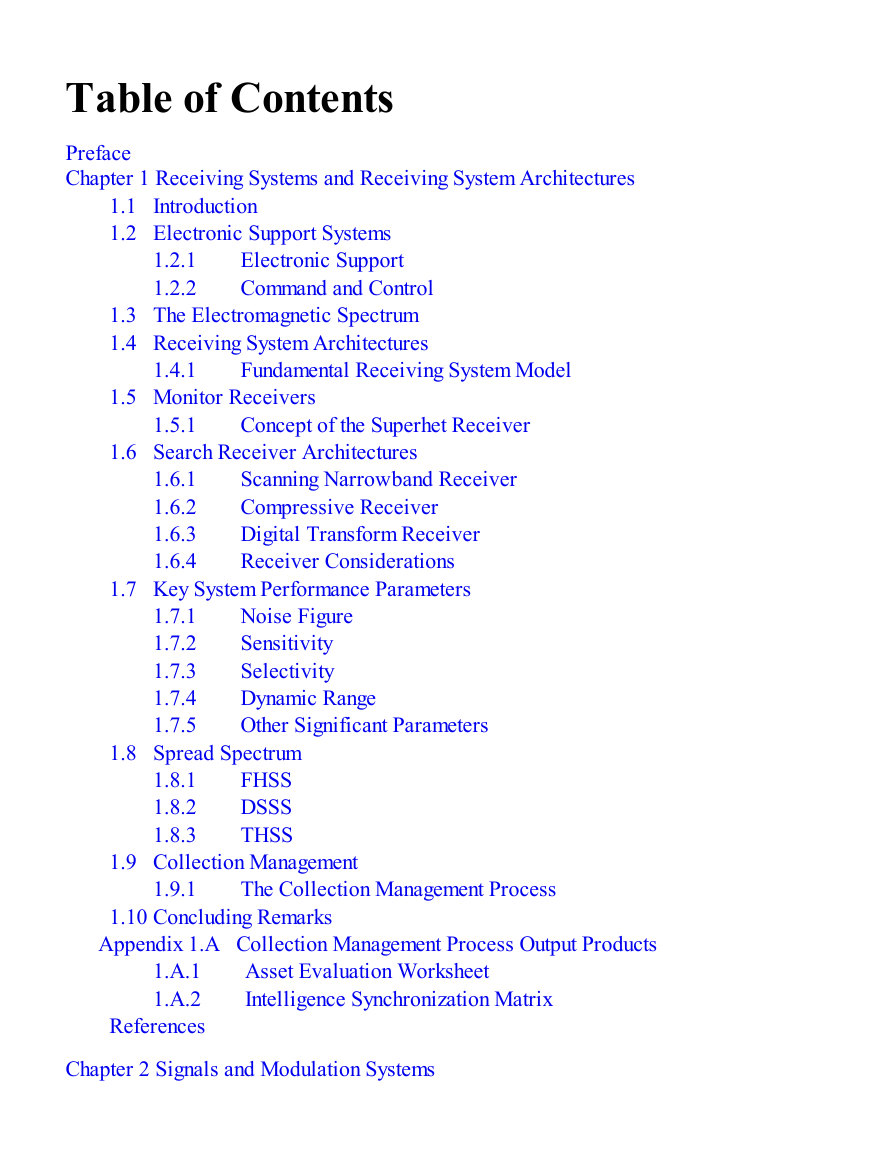








 2023年江西萍乡中考道德与法治真题及答案.doc
2023年江西萍乡中考道德与法治真题及答案.doc 2012年重庆南川中考生物真题及答案.doc
2012年重庆南川中考生物真题及答案.doc 2013年江西师范大学地理学综合及文艺理论基础考研真题.doc
2013年江西师范大学地理学综合及文艺理论基础考研真题.doc 2020年四川甘孜小升初语文真题及答案I卷.doc
2020年四川甘孜小升初语文真题及答案I卷.doc 2020年注册岩土工程师专业基础考试真题及答案.doc
2020年注册岩土工程师专业基础考试真题及答案.doc 2023-2024学年福建省厦门市九年级上学期数学月考试题及答案.doc
2023-2024学年福建省厦门市九年级上学期数学月考试题及答案.doc 2021-2022学年辽宁省沈阳市大东区九年级上学期语文期末试题及答案.doc
2021-2022学年辽宁省沈阳市大东区九年级上学期语文期末试题及答案.doc 2022-2023学年北京东城区初三第一学期物理期末试卷及答案.doc
2022-2023学年北京东城区初三第一学期物理期末试卷及答案.doc 2018上半年江西教师资格初中地理学科知识与教学能力真题及答案.doc
2018上半年江西教师资格初中地理学科知识与教学能力真题及答案.doc 2012年河北国家公务员申论考试真题及答案-省级.doc
2012年河北国家公务员申论考试真题及答案-省级.doc 2020-2021学年江苏省扬州市江都区邵樊片九年级上学期数学第一次质量检测试题及答案.doc
2020-2021学年江苏省扬州市江都区邵樊片九年级上学期数学第一次质量检测试题及答案.doc 2022下半年黑龙江教师资格证中学综合素质真题及答案.doc
2022下半年黑龙江教师资格证中学综合素质真题及答案.doc